The Top 10 Vegetables You Can Eat to Prevent and Reverse Cancer
The #1 most powerful anti-cancer food was garlic
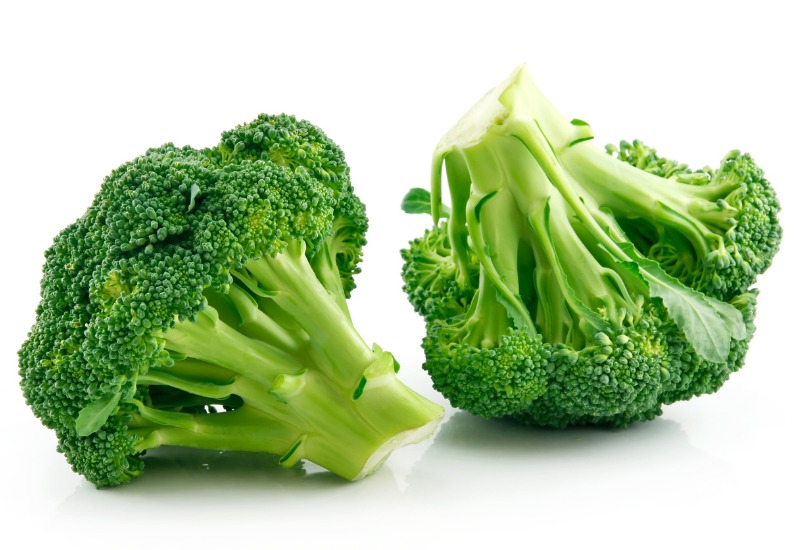
Garlic has stopped cancer growth COMPLETELY against these tumor cell lines:
- Breast cancer
- Brain cancer
- Lung cancer
- Pancreatic cancer
- Prostate cancer
- Childhood brain cancer
- And stomach cancer
Leeks were #1 against kidney cancer. Garlic was #2.
But not just garlic and leeks, almost all vegetables from the Allium and Cruciferous families completely stopped growth in the various cancers tested.
Here they are:
Allium vegetables:
- Garlic
- Leeks
- Yellow and Green Onions
Cruciferous vegetables:
- Broccoli
- Brussels sprouts
- Cauliflower
- Kale
- Red cabbage and curly cabbage
Spinach and Beet Root also scored in the top ten against many of the cancers tested.
Honorable mentions:
- Asparagus
- Fiddlehead
- Green beans
- Radishes
- Rutabaga
Poor Performers:
- Acorn Squash
- Bok Choy
- Boston Lettuce
- Carrot
- Endive
- English Cucumber
- Fennel Bulb
- Jalapeño
- Orange Sweet Pepper
- Potato
- Radicchio
- Romaine lettuce
- Tomatoes
Here is an excerpt from the paper’s abstract:
“The extracts from cruciferous vegetables as well as those from vegetables of the genus Allium inhibited the proliferation of all tested cancer cell lines whereas extracts from vegetables most commonly consumed in Western countries were much less effective. The antiproliferative effect of vegetables was specific to cells of cancerous origin and was found to be largely independent of their antioxidant properties. These results thus indicate that vegetables have very different inhibitory activities towards cancer cells and that the inclusion of cruciferous and Allium vegetables in the diet is essential for effective dietary-based chemopreventive strategies.”
Translation:
- Allium and cruciferous veggies stopped cancer cell growth.
- Commonly consumed vegetables did not work as well.
- The antioxidant content of veggies was not a key anti-cancer factor.
- Different vegetables work for different cancers.
- Allium and cruciferous veggies should be eaten to prevent cancer.
So the most commonly consumed vegetables in Western countries had very little effect on cancer cell growth.
The top three (potatoes, lettuce, and carrots) account for 60% of the vegetables we Westerners are eating. 32% of our vegetable intake is potatoes, and half of that is actually french fries. Nice.
Dark greens, cruciferous veggies, and garlic account for less than 1% of our Western diet! Hello?
An interesting note:
Radishes were found to stop tumor growth by 95-100% for breast and stomach cancer but may have even increased tumor growth by 20-25% in pancreatic, brain, lung, and kidney cancer. Definitely something to keep in mind.
Have a look at the charts in the study to see which veggies worked best against which cancer. Read the full study here. The charts are on page 3.
Now if you are familiar with my story you may be thinking, “Wait a minute Chris, didn’t you drink tons of carrot juice every day?”
Yes, I did. (More about that here)
Before You Write Off the “Poor Performers”
It’s important to keep in mind that this is a laboratory study showing only what a vegetable extract did to when applied directly to cancer cells.
The study does not take into account the vitamins, minerals, and phytonutrients that indirectly support your body’s ability to repair, regenerate, detoxify, and heal.
Cancer is a product of a toxic body, so detoxing your body is critical in healing cancer.
For example, carrots are a potent source of beta-carotene, which is converted to Vitamin A in the body. Vitamin A supports your liver. Your liver is a critical component of your immune system because it detoxifies your body. Cancer is a product of a toxic body, so detoxing your body is critical in healing cancer, and so on.
Having said all that, it makes sense to focus on eating tons of the veggies that were actually killing cancer in the lab.
Also, this study confirms why what I did in 2004 worked.
I ate copious amounts of these cancer-fighting vegetables every day in my Giant Cancer-Fighting Salad, specifically spinach, kale, broccoli, cauliflower, onions, red cabbage, and garlic powder. I had no idea about leeks or else they would have been in there, too.
Garlic Is An Anti-Cancer Vegetable
And I ate several cloves of garlic per day.
If garlic kills cancer, then I wanted to saturate my body with garlic.
So I would just crush up the cloves and swallow them with a mouthful of water.
I also took Kyolic Garlic Extract.
And yes, I reeked. But I lived to tell the tale!
Cruciferous vegetables (broccoli, cabbage, cauliflower, brussels sprouts, kale, collards, watercress, mustard greens, and turnips) contain indoles, isothiocyanates, glucosinolates, and other compounds that may provide protection against various cancers.
The dark green crucifers, in particular, are rich in minerals such as calcium and magnesium, folate, and many other nutrients. One cup of chopped broccoli supplies the daily requirement of vitamin C, in addition to various carotenoids, niacinamide, thiamine, vitamin E, and lots of fiber.
Women over 60 who ate five servings each week of cruciferous vegetables tested a full one to two years younger in memory and mental sharpness than women who ate just two servings a week. These veggies have been credited with helping to prevent high blood pressure, heart disease and strokes. Broccoli, kale, swiss chard, and collards appear to fend off both macular degeneration and cataracts. Their phytonutrients can promote detoxification.
 To preserve nutrients, don’t overcook them. Steaming broccoli preserves about 90% of its phytochemicals versus 19% for boiling and 3% for microwaving.
To preserve nutrients, don’t overcook them. Steaming broccoli preserves about 90% of its phytochemicals versus 19% for boiling and 3% for microwaving.
Reared on iceberg lettuce, many Americans don’t know how nutritious and delicious greens can be. Apart from traditional nutrients like B vitamins, vitamin C, bioflavonoids, and calcium, there are numerous petrochemicals in greens. These substances protect your eyes, improve your skin, balance your cholesterol and blood pressure, raise the odds for keeping your mental edge, and help stave off cancer, among other benefits. Green vegetables are the food most missing from modern diets. They strengthen the blood and immune systems, prevent cancer and fight depression naturally. Greens can increase mental clarity and sustain energy. Some are great raw; others may be served cooked – but cook them quickly to preserve nutrients.
Kale is a nutritional superstar, loaded with calcium, potassium, cancer-fighting indoles, carotenoids, and other antioxidants. One cup of wilted collard greens provides over 9000 micrograms (meg) of beta-carotene and 266 milligrams (mg) of calcium.
 Spinach is rich in carotenes, folate, vitamin E, calcium, magnesium, and iron, to say nothing of its abundant potassium and vitamin K. Spinach contains high levels of quercetin (balances cholesterol) and lutein (over 12,000 meg in four cups packed raw or one-third cup cooked), which fortifies retinal cells, protects the prostate, blocks communication signals to cancer cells, and may help prevent heart disease and stroke.
Spinach is rich in carotenes, folate, vitamin E, calcium, magnesium, and iron, to say nothing of its abundant potassium and vitamin K. Spinach contains high levels of quercetin (balances cholesterol) and lutein (over 12,000 meg in four cups packed raw or one-third cup cooked), which fortifies retinal cells, protects the prostate, blocks communication signals to cancer cells, and may help prevent heart disease and stroke.
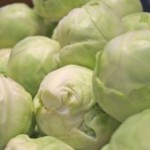 A one-cup serving of savoy cabbage contains a generous helping of folate and nearly double the amount of fiber found in other types of cabbage. The same sulfurous compounds in other cabbages are present, which may foil the replication of cancer cells.
A one-cup serving of savoy cabbage contains a generous helping of folate and nearly double the amount of fiber found in other types of cabbage. The same sulfurous compounds in other cabbages are present, which may foil the replication of cancer cells.
Watercress offers 960 mg of beta-carotene per cup, copious amounts of calcium, carotenes like lutein, and traces of omega-3 fatty acids. Watercress has a high amount of PEITC (phenylethylisothiocyanate) which appears to block cancer-causing chemicals, perhaps even protecting the lungs of smokers from carcinogens associate with tobacco.
Dark lettuce – when the plant is in the flowering stage – has calming properties and can assist in cases of insomnia. It also has a diuretic effect and a carminative effect (relieving flatulence and that full feeling when you eat too much), and can help lower blood sugar levels.
Purslane, often considered a pesky weed, boasts the richest known green vegetable cache of ALA, an omega-3 fatty acid. Omega-3s are vital to immune mechanisms, the cardiovascular system, nervous system, etc. Unlike other plant sources of omega-3s, purslane contains some EPA, the pre-formed type found in many fish, as well as vitamins A, C and E.
 Asparagus may help reduce exposure to pesticide residues on produce. Malathion is used on every plant from alfalfa to walnuts. One study showed that a one percent solution of asparagus and water (equivalent to eating 3 1/2 ounces of the vegetable) degraded the insecticide malathion to nondetectable levels in as little as 20 minutes. Because the “insecticide-fighting” ingredient is an enzyme, the heat of cooking deactivates it; therefore raw asparagus may be more effective. Nutritionally, asparagus is rich in folate, iron, carotenoids, and vitamin C.
Asparagus may help reduce exposure to pesticide residues on produce. Malathion is used on every plant from alfalfa to walnuts. One study showed that a one percent solution of asparagus and water (equivalent to eating 3 1/2 ounces of the vegetable) degraded the insecticide malathion to nondetectable levels in as little as 20 minutes. Because the “insecticide-fighting” ingredient is an enzyme, the heat of cooking deactivates it; therefore raw asparagus may be more effective. Nutritionally, asparagus is rich in folate, iron, carotenoids, and vitamin C.
Other vegetables, though not rich in chlorophyll, are dense in other nutrients that have many protective qualities. Onions, for example, may help prevent osteoporosis. In animal studies, onions help decrease bone loss by preventing the loss of bone-building minerals. Onions with the boldest taste contain the highest antioxidant activity and appear to be the most effective in inhibiting the growth of cancers such as colon and liver cancer. Shallots and strong onions boast the most powerful antioxidant profile, while more mild varieties lag far behind in potency.
Beets are a good source of betaine and help keep bile the right consistency, aiding liver detoxification. Betalain, an antioxidant in beets, stimulates the productions of enzymes that slow some risks associated with aging, including cancer and cardiovascular disease.
Turnips contain the same sulfurous components of other cruciferous vegetables, along with vitamin C. Turnip greens are especially nutritious, with plenty of carotenes and vitamin C, as well as riboflavin, calcium, and iron. Of all root vegetables, rutabagas are the best source of vitamin C complex.
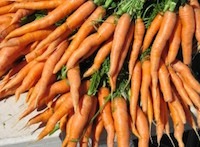 Carrots are one of the best sources of beta-carotene, a precursor of vitamin A and one of the best cancer-fighting vegetables. Levels of carotenes and other antioxidants are higher when the carrots are not peeled. Carrots offer some lutein, vitamin C, and potassium. They are a storehouse of fiber and a source of the trace mineral silicon, which helps strengthen connective tissue and aids calcium metabolism. Parsnips, a relative of the carrot, provide vitamin C, folate, and potassium.
Carrots are one of the best sources of beta-carotene, a precursor of vitamin A and one of the best cancer-fighting vegetables. Levels of carotenes and other antioxidants are higher when the carrots are not peeled. Carrots offer some lutein, vitamin C, and potassium. They are a storehouse of fiber and a source of the trace mineral silicon, which helps strengthen connective tissue and aids calcium metabolism. Parsnips, a relative of the carrot, provide vitamin C, folate, and potassium.
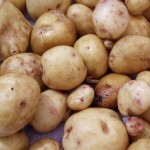 Raw potatoes are a valuable source of vitamin C complex and protein. Even when cooked, they are a beneficial source of potassium (407 mg in 2/3 cup diced or one-quarter of a large baked potato), niacinamide, and magnesium. Potatoes contain kukoamines, natural chemicals mat may reduce blood pressure. (These powers are depleted by baking and frying). Sweet potatoes are queen supreme for beta-carotene and other carotenoids; they also offer plenty of magnesium and potassium.
Raw potatoes are a valuable source of vitamin C complex and protein. Even when cooked, they are a beneficial source of potassium (407 mg in 2/3 cup diced or one-quarter of a large baked potato), niacinamide, and magnesium. Potatoes contain kukoamines, natural chemicals mat may reduce blood pressure. (These powers are depleted by baking and frying). Sweet potatoes are queen supreme for beta-carotene and other carotenoids; they also offer plenty of magnesium and potassium.
Among the summer squash family, zucchini gets a rave review for its lutein and potassium content. Beneath the thick skin of winter squash lies a bevy of nutrients, such as magnesium, calcium, folate, carotenes, B-vitamins, vitamin C complex, and various antioxidants. These high-fiber vegetables are packed with potassium too, which can lower high blood pressure. Butternut squash is loaded with beta-carotene: a cup has more than 100% of the RDA for vitamin A for women. A one-cup serving of acorn squash has 19% of the daily recommended amount of potassium and is rich in the B and C vitamins.
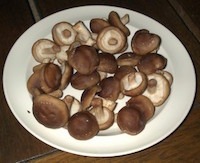 We often hear about the benefit of certain mushrooms regarding immune function and reduced cancer risk. But did you know that mushrooms also provide a hefty amount of the B vitamins niacinamide (about 4 mg in 1 1/2 cups chopped or 1/2 cup cooked – about eight button mushrooms) and riboflavin, which help cells turn food into energy? One serving can provide about 314 mg of potassium and is among the highest veggie sources (9 mg) of selenium — a free radical fighter. Mushrooms even contain vitamin D! Common mushrooms contain fibers that are good for the cardiovascular system, and they may be the top source of the antioxidant ergothioneine, containing 12 times as much as in wheat germ and four times as much as in chicken liver.
We often hear about the benefit of certain mushrooms regarding immune function and reduced cancer risk. But did you know that mushrooms also provide a hefty amount of the B vitamins niacinamide (about 4 mg in 1 1/2 cups chopped or 1/2 cup cooked – about eight button mushrooms) and riboflavin, which help cells turn food into energy? One serving can provide about 314 mg of potassium and is among the highest veggie sources (9 mg) of selenium — a free radical fighter. Mushrooms even contain vitamin D! Common mushrooms contain fibers that are good for the cardiovascular system, and they may be the top source of the antioxidant ergothioneine, containing 12 times as much as in wheat germ and four times as much as in chicken liver.
| Garlic

Garlic is one of my favorite foods for cooking. It’s a flavorful addition that’s great in almost any dish. But more importantly, it has an abundance of health benefits. Packed with vitamins C and B6, selenium, and fiber, garlic is a great source of nutrients. It can also help treat hypertension by lowering blood pressure, possesses antioxidant properties, and is a powerful detoxifying agent.
But perhaps most importantly, garlic has powerful anti-cancer abilities. A 2009 study published in the journal Food Chemistry found that garlic was able to completely stop cancer growth for certain cancers. Lung, brain, breast, prostate, and pancreatic cancers were all effectively stopped. According to the study’s authors:
All members of the Allium family tested in this study were powerful inhibitors of tumour cell proliferation. In fact, among all vegetables tested in this study, the extract from garlic was by far the strongest inhibitor of tumour cell proliferation, with complete growth inhibition of all tested cell lines.”
Here’s a tasty Black Bean Hummus recipe featuring a whole lot of this cancer-fighting food.
2| Broccoli

Broccoli is a member of the cruciferous vegetable family and a powerful antioxidant. Antioxidants protect against cell damage caused by free radicals. These rogue cells are thought to be a major cause of cancer proliferation. It also contains a powerful nutrient compound known as sulforaphane.
Sulforaphane has been the subject of hundreds of peer-reviewed studies and is one of the most proven nutrients for blocking the progression and formation of cancer. It can also help to induce apoptosis, which is the body’s natural system of programmed cell death when cells become damaged or mutated. Without apoptosis, damaged cells are allowed to multiply and spread, leading to cancer.
Cruciferous veggies like broccoli also contain vitamins C, K, and E, are anti-inflammatory, and can help prevent angiogenesis (the formation of new blood vessels that helps cancer proliferate). It has also been shown to render carcinogens inactive, which is essential in today’s toxic world.
Go here to learn how to prepare broccoli to get the most health benefits.
3| Brussels Sprouts
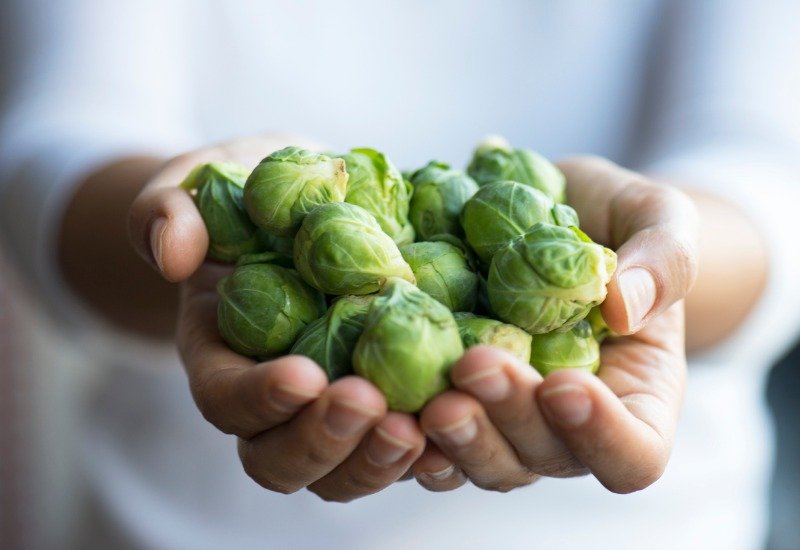
Brussels sprouts are loaded with nutrients, including vitamin C, potassium, and B vitamins, plus it has antioxidant properties. Another member of the cruciferous family, these sprouts are rich in sulfur-containing compounds called glucosinolates, which support detoxification, and indole-3-carbinol which reduces the risk of breast, colon, and lung cancer. Glucosinolates also assist in suppressing carcinogens and inducing apoptosis.
If all that isn’t enough, Brussels sprouts are also an anti-inflammatory, which is important. Chronic inflammation is at the root of most chronic disease, so anything you can do to reduce it is a huge win.
Click here to get my recipe for Brussels Sprout Chiffonade with Shallots and Pine Nuts.
4| Kale
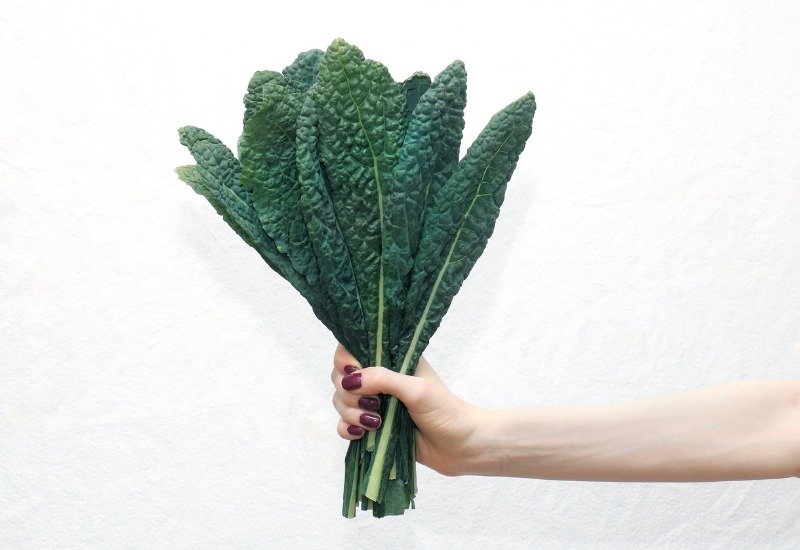
Yet another cruciferous veggie (noticing a trend?), kale is an excellent source of antioxidants, calcium, vitamin C, and chlorophyll.
Chlorophyll helps to prevent the body from absorbing carcinogens. Kale has also been shown to defend against diabetes and heart disease.
Kale is also a major source of organosulfer compounds, which have been shown in studies to reduce the risk of cancer. It is also a source of sulforaphane, a type of glucosinolate. Sulforaphane also boosts your immune system, which is the bodies natural defense system and your best bet for preventing disease.
In the kitchen, kale can be used in many ways…
Check out this delicious Detoxifying Cauliflower, Kale, and Pine Nut Confetti Recipe.
5| Artichokes
Artichokes are actually a perennial thistle, but they’re absolutely loaded with nutrients. Vitamins C, K, and B9, calcium, iron, and potassium are just a few of the health benefits you’ll get from artichokes. They can help prevent coronary disease and have antioxidant properties to help fight free radicals.
One study found that extracts from artichoke leaves can inhibit cancer growth and activity. And by inducing apoptosis, they are especially effective at combating breast cancer.
Artichokes are one of my favorite veggies. Below is a tasty French-inspired recipe that is sure to please!
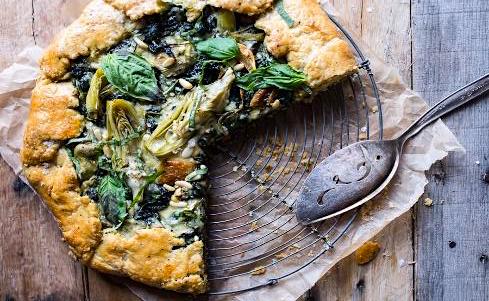
The galette is an open faced pie that originates in France. This delightful entree features a gluten-free, dairy-free, buckwheat flax base filled with tasty veggies famed for their anti-cancer benefits.
Artichokes have recently been noticed for their liver and kidney detoxifying attributes and anti-cancer phytonutrients of quercetin, rutin, and cynarin. These are concentrated antioxidants that help shrink tumors and prevent them from spreading.
Combined with the remaining super spices and ingredients this dish is sure to become a favorite anti-cancer meal option.
Ingredients
- 8 artichoke hearts, quartered
- 3 baby turnips, quartered
- 1 cup fresh spinach leaves, washed and coarsely chopped
- 1 tablespoon sun dried tomatoes, finely chopped
- 1 teaspoon coconut oil
- ¾ cup red onion, julienned
- 1 clove garlic, crushed and chopped
- 2-3 tablespoons pine nuts (optional)
- 6 fresh sage leaves, coarsely chopped
- 1 teaspoon fresh thyme leaves
- 3 tablespoons fresh lemon juice
- Splash of Balsamic vinegar
- ¼ cup spring OR filtered water
- ½ teaspoon freshly ground black pepper
- ¼ teaspoon pink OR sea salt, to taste
- 1 ¼ cup buckwheat flour (or grind your own from untoasted buckwheat kernels)
- ¼ cup ground flaxseed (or grind your own from organic flax seeds)
- ½ cup cold pressed coconut oil, semi-hard
- ½ teaspoon fine pink OR sea salt
- ¼ cup very cold water, added gradually
Instructions
- If using frozen artichoke hearts, take out eight artichoke hearts and set aside in a bowl to defrost.
- In a separate bowl add all the remaining ingredients except pine nuts, spinach, salt and pepper.
- Stir in the artichoke hearts when semi-defrosted.
- Heat a saucepan on the stove until the teaspoon of coconut oil melts. Then place all the ingredients in the pan, except the pine nuts and spinach, over medium low heat stirring occasionally until the artichokes are tender (approximately 10-15 minutes).
- Allow to cool then adjust the seasoning by adding salt and pepper to taste.
- In a bowl add the buckwheat, flax flour, and salt mixing it with a fork for even distribution.
- Add the coconut oil and blend with a pastry cutter or large fork. When it looks like pea sized crumbs, add water slowly and knead with hands gently a few strokes until it holds together like cookie dough. Note: this process can be accomplished very quickly in a food processor with the plastic blade or regular blade on pulse for 30 seconds until the dough forms.
- Then place dough on a lightly floured surface and roll out with a rolling pin. Place in a lightly oiled 9-inch pie or tart dish allowing the excess to hang over the sides. Add the spinach and pine nuts to the filling and place the filling inside the dish, folding the dough slightly over the first two inches of filling.
- Bake at 350 degrees Fahrenheit for 20 minutes or until the crust is light brown.
- Allow to cool for five minutes. Then slice into eight pieces and serve with additional pine nuts and drizzled extra virgin olive oil. Enjoy!
If you want to get a head start on cancer prevention, these veggies are a great way to start. You’ll be able to reduce inflammation and angiogenesis, promote apoptosis and healthy immune function, detoxify and neutralize harmful carcinogens, and attack the mechanisms that cancer cells use to grow.
Even better, you’ll be providing your body with tons of essential nutrients and minerals. Be sure to buy organic and balance your diet with all of the other nutrients you need to stay healthy.
For those of you who want to incorporate more anti-cancer foods into your diet, check out more recipes on our site, packed with delicious ways to prepare nutritious, cancer-fighting meals!
- Garlic
- Leeks
- Yellow and Green Onions
- Broccoli
- Brussels Sprouts
- Cauliflower
- Kale
- Red Cabbage and Curly Cabbage
- Spinach
- Beet Root
Honorable Mentions:
- Asparagus
- Fiddlehead
- Green beans
- Radishes
- Rutabaga Wishing everyone with cancer the best and I hope that one day you will be cancer free . Sending lots of love xo
Comments
Post a Comment